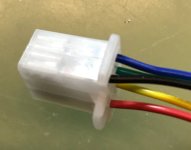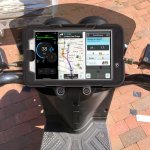MJSfoto1956
10 kW
On a somewhat related theme, my current Chinese eScooter/eMoped comes with an anemic QS205 2000w 12" hub motor which I plan on upgrading (after first upgrading my controller) to a QS273 8000w 13" hub. There are five wires that constitute the "Halls" connection on a 273 series. But the PowerVelocity wiring diagrams (that I could find) only show three wires connected to the motor. Do I leave these two additional wires unconnected? If not, where do they go?




